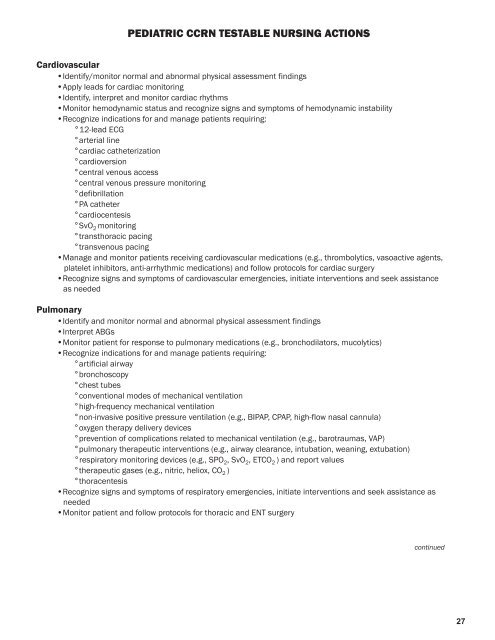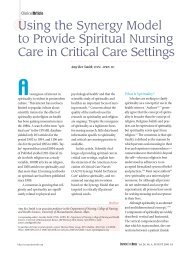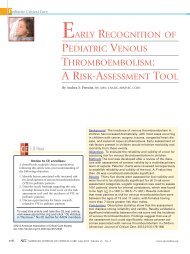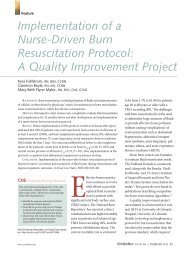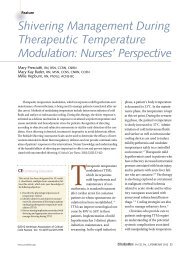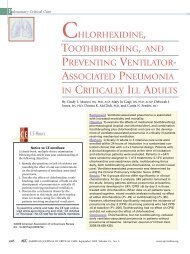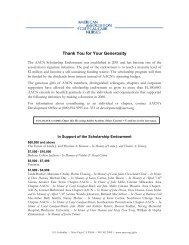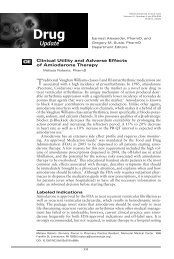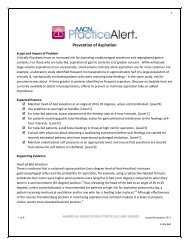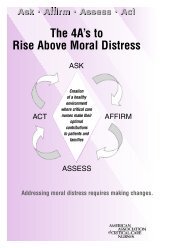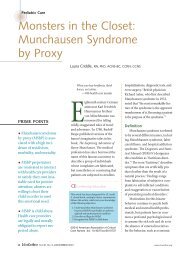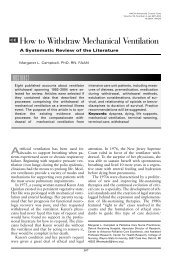CCRN/PCCN Exam Handbook - American Association of Critical ...
CCRN/PCCN Exam Handbook - American Association of Critical ...
CCRN/PCCN Exam Handbook - American Association of Critical ...
Create successful ePaper yourself
Turn your PDF publications into a flip-book with our unique Google optimized e-Paper software.
PedIAtRIC CCRn testABLe nURsIng ACtIons<br />
Cardiovascular<br />
•Identify/monitor normal and abnormal physical assessment findings<br />
•apply leads for cardiac monitoring<br />
•Identify, interpret and monitor cardiac rhythms<br />
•Monitor hemodynamic status and recognize signs and symptoms <strong>of</strong> hemodynamic instability<br />
•recognize indications for and manage patients requiring:<br />
°12-lead eCG<br />
°arterial line<br />
°cardiac catheterization<br />
°cardioversion<br />
°central venous access<br />
°central venous pressure monitoring<br />
°defibrillation<br />
°Pa catheter<br />
°cardiocentesis<br />
°SvO 2 monitoring<br />
°transthoracic pacing<br />
°transvenous pacing<br />
•Manage and monitor patients receiving cardiovascular medications (e.g., thrombolytics, vasoactive agents,<br />
platelet inhibitors, anti-arrhythmic medications) and follow protocols for cardiac surgery<br />
•recognize signs and symptoms <strong>of</strong> cardiovascular emergencies, initiate interventions and seek assistance<br />
as needed<br />
Pulmonary<br />
•Identify and monitor normal and abnormal physical assessment findings<br />
•Interpret abGs<br />
•Monitor patient for response to pulmonary medications (e.g., bronchodilators, mucolytics)<br />
•recognize indications for and manage patients requiring:<br />
°artificial airway<br />
°bronchoscopy<br />
°chest tubes<br />
°conventional modes <strong>of</strong> mechanical ventilation<br />
°high-frequency mechanical ventilation<br />
°non-invasive positive pressure ventilation (e.g., bIPaP, CPaP, high-flow nasal cannula)<br />
°oxygen therapy delivery devices<br />
°prevention <strong>of</strong> complications related to mechanical ventilation (e.g., barotraumas, VaP)<br />
°pulmonary therapeutic interventions (e.g., airway clearance, intubation, weaning, extubation)<br />
°respiratory monitoring devices (e.g., SPO 2, SvO 2, eTCO 2 ) and report values<br />
°therapeutic gases (e.g., nitric, heliox, CO 2 )<br />
°thoracentesis<br />
•recognize signs and symptoms <strong>of</strong> respiratory emergencies, initiate interventions and seek assistance as<br />
needed<br />
•Monitor patient and follow protocols for thoracic and eNT surgery<br />
continued<br />
27


